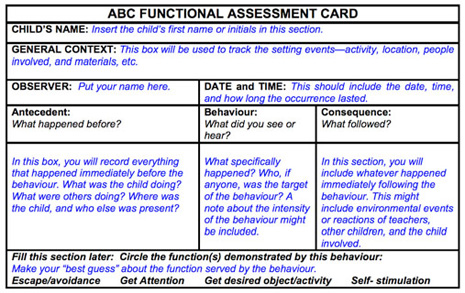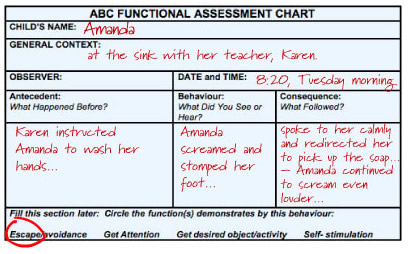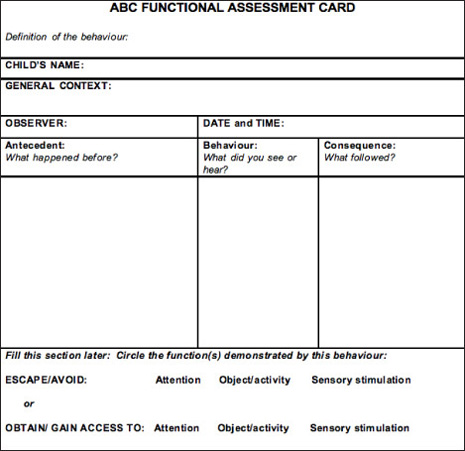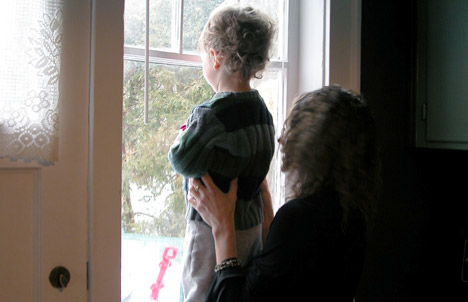
Learning to regulate our emotional responses, especially during times of stress, can be difficult. Most children have some natural ways of self-regulating, but may also need to learn appropriate ways to respond when experiencing anxiety. Calming strategies can help a child to work through strong emotions. When calming strategies are practiced regularly throughout the day, the possibility for use at times of anxiety is increased.
Tips on setting up a calming routine
When setting up a calming routine in your home or program, here are the first things you need to consider:
- Take an inventory of the calming strategies your child is already using and select the ones you want to reinforce. Start with strategies that are familiar to your child and are appropriate for their developmental level. This may help build on their existing resources and increase the likelihood of success. Later, once your child is familiar with practicing the strategies, you can introduce new ones.
- Choose the best times for your children to practice these activities. Calming strategies are best introduced during the least stressful times.
- Try to make the activities fun by including props and visuals, such as pillows, squeeze balls, and pictures. For example, Robin is waiting for a turn with his favourite toy truck. He is starting to pace back and forth. His caregiver brings the “stress ball” that is kept in the book/quiet area. Robin takes the ball back to the quiet area and looks at his relaxation book, which shows him how to use the stress ball. His caregiver calls him to play with the truck when his friend is finished and praises him for his efforts.
Calming Activities
When choosing a calming activity, keep in mind your child’s developmental level. For example, a child will need to have good language skills and be able to express themselves in order to use “problem solving and brainstorming.” Here are some examples:
Breathing Exercises:
Breathing exercises can help to remind your child to stop and count out deep breaths at a time of upset. You can also use visuals as a non-verbal reminder, posting them in a quiet area of the room or where the exercise is most likely to be practiced.
- Blowing Out Birthday Candles – Have your child hold up one hand; their fingers are the “candles”. Count out the five “candles” together. Then blow out each “candle” with a long breath. Curl your finger down slowly while you are blowing.
- Blowing up Balloons – Pretend to pull a balloon out of your pocket and encourage your child to do the same. Cup your hands together and hold them in front of your mouth. Take a deep breath and as you exhale slowly expand your hands as if inflating a balloon. When you are finished take a deep breath and slowly close your hands back together as you exhale to “deflate the balloon”. Repeat this five times.
Physical Activities:
The following physical activities use the body to bring a sense of calm that can be instantly felt. Tensing and relaxing our muscles is a great way to relieve tension and stress.
- Sticky Hands – Pretend to have “sticky” hands and then press them together. Now push hard for 20 seconds. You can count it out with your child. Now tell your child to slowly allow their hands to come apart and see if they can feel the stickiness. Repeat this sequence two or three times.
- Stretching – Have your child do simple stretches such as touching their toes and reaching up to the sky on their tip toes. Have your child lie on their backs and make letters with their bodies. Try “X” (spread out their legs and arms) and “T”, (put their legs together while keeping their arms stretched out). Be creative and add your own! Remember to move slowly from stretch to stretch.
- Tense and Relax – Have your child form their hands into fists and bring their shoulders to their ears. Count to five with them and then relax. Repeat five times. Try using props such as “squeeze balls” to help exaggerate the motion.
- Yoga
There are many books and websites with yoga positions for children. Using visuals and showing by example will help your child get into the various positions. Here are a few examples:- The Leaf – Sit with spine straight, soles of feet together, hands on ankles. Gently round spine and then return to sitting straight. Repeat several times.
- The Flower – Sit with spine straight, soles of feet together, hands on ankles. Gently bounce knees toward floor 10 to 20 times.
- The Starfish – Lie on back, arms and legs comfortably stretched. Raise one arm at a time toward ceiling and lower. Next, lift one leg at a time toward ceiling. Later, try lifting one arm and the opposite leg at the same time.
Sensory Play:
Sensory play has a calming effect by allowing your child to focus on one sense (often touch) and “block out” others. Make sure to have sensory materials such as play dough, sand, or water available at all times. Other ideas include:
- Feeling Box – Put together a variety of different materials to touch, such as felt, leather, smooth stone, feather, fur, etc.
- Listening Centre – Have available calming music with headphones or quiet instruments such as a rain stick.
- Visual Centre – Provide a dimly-lit area or box and have glow-in-the-dark stickers and toys that light up.
Imaginative or Creative Thinking:
Imaginative or creative thinking can help your child to better understand stressful situations and to practice solutions.
- Personal Stories – Personal stories describe a social situation and show how to cope with it successfully. They are effective teaching tools because they can be personalized to a particular child or group. For tips on creating personal stories, follow the link “Creating Personal Stories” in the For More Information box below.
- Story Books – Story books that highlight social situations can be used to promote conversation, understanding of emotions and empathy. It’s a great way for your child to identify with characters in stressful situations and to understand how the story character copes. Stories can be chosen or adapted to fit the needs or developmental level of your child or group.
- Role Play – Role playing gives children an opportunity to explore a situation, concept or social skill through play and to find different ways to handle stressful situations. The experience can be enhanced by using puppets, dress-up, and toys.
- Problem Solving/Brain Storming – Talking about problems or concerns in a group of peers can provide opportunities for your child to express ideas ask questions and arrive at possible solutions in a safe environment. The process generally begins by posing a question, problem or topic. The children are then encouraged to contribute to the free flow of ideas. The ideas can then be written down or drawn in a picture. It’s a great way for your child to learn from and to build positive relationships with their peers. The caregiver’s role is to establish a warm and supportive environment for this process and to emphasize the importance of listening.
Positive Self Talk:
Positive self-talk may help to increase your child’s self esteem and, therefore, the ability to deal with anxiety. The following are examples of activities designed for the classroom to help promote positive self talk. These activities can also be adapted for home. You can also follow the link below to the “Kids Have Stress Too!” website in the For More Information box to get more ideas.
- “I Can” Flower – Start by handing out paper flower petals to each child. In the center of the circle put the core of the flower with the words “I Can” on it. Have each child say something they can do, write it on their petal and then have them add it to the flower. The game is easily adapted for a wide variety of children by having them select from a few photos or by giving a few examples or choices. To expand this game, try using different themes, such as “I can” to help at home, “I can” with my friends.
- “I Can” Project – Give each child a personal can or box and help identify a goal they would like to achieve. More difficult skills can be broken down into smaller, more easily achievable steps. As a child demonstrates the steps, help acknowledge their achievement by writing it down on a small piece of paper. The child then puts the paper into their can. Start with a skill that is developmentally appropriate and achievable. For example, a child is working on snipping with scissors. At each step of learning the task write down the success, such as “I can cut on the line,” and help them put it into their can. When a child says “I can’t do it” you can use this method to help guide them through the problem.
Tips for Infants and Young Toddlers
For infants and young toddlers, having a soothing and responsive caregiver as well as a calming environment increases the young child’s ability to handle stress and begin to self-regulate emotions. The following may help calm a young child:
- Motion – Rocking, walking, dancing or using swings can help a child to breathe more regularly.
- Music – Calm, quiet music, either sung or using a tape or CD can help soothe a child.
- Changing position – The way that you hold or carry can help calm a very young child. Try changing positions and to see how a child will respond.
- Reduce Stimulation – Try dimming the lights and reducing the amount of noise in the room.










